Acrylic vs Oil: Which is Best for Beginners?
Choosing the right paint can feel like standing at a crossroads, each path offering its unique adventure. For beginners stepping into the vibrant world of painting, the decision often boils down to two popular mediums: acrylics and oils. Both have their strengths and weaknesses, and understanding these can help you embark on your artistic journey with confidence. In this article, we’ll dive deep into the characteristics of each medium, exploring aspects like drying time, ease of use, and cost considerations. So, grab your paintbrush and let’s get started!
Acrylic paint is like that trusty friend who’s always ready for an adventure. Its versatility makes it a favorite among many beginners. The paint dries quickly, which means you can go from blank canvas to finished piece in a matter of hours. Plus, acrylics can be used on a variety of surfaces, including canvas, wood, and even paper, allowing for endless experimentation. This adaptability makes acrylics an excellent choice for those who are still figuring out their style and preferences. Whether you want to create bold abstracts or delicate landscapes, acrylic paint is your go-to medium.
On the other hand, oil paint is like a fine wine—rich, complex, and steeped in history. Artists have been using oils for centuries, and it's easy to see why. The slow drying time of oil paints allows for beautiful blending and layering, offering artists the chance to refine their techniques over time. This can be particularly beneficial for those who enjoy working on a piece over several sessions, allowing ideas to develop and evolve. However, the unique characteristics of oil paints might feel intimidating for newcomers, as they require a bit more finesse and knowledge.
The drying time of acrylic and oil paints significantly affects the painting process. Imagine trying to layer colors quickly; with acrylics, you can do just that. They dry rapidly, allowing you to build up layers without waiting for long periods. This quick turnaround is perfect for beginners who want to see immediate results and keep their creative momentum going. In contrast, oil paints take their sweet time to dry, which can be both a blessing and a curse. While it allows for intricate blending, it also means that you’ll need to practice patience.
Acrylics are ideal for those who want to complete a painting in a single session. The quick drying time allows for rapid layering and immediate results, perfect for beginners. Imagine setting up your easel, diving into your creative flow, and walking away with a completed artwork in just a few hours. It’s exhilarating!
The extended drying time of oil paints encourages patience and careful consideration. This characteristic can help beginners develop a more thoughtful approach to their artwork. Instead of rushing through a piece, oil paints allow you to take a step back, reflect, and make adjustments as needed. It’s a slower dance, but one that can lead to stunning results.
When starting out, the cost of materials can be a significant factor. Both acrylics and oils have budget-friendly options, but understanding the long-term investment is crucial for beginners. Acrylics tend to be more affordable upfront, as they often come in larger tubes at a lower price point. However, when it comes to oils, the initial investment might be higher due to the need for additional supplies like solvents and mediums. Here’s a quick comparison:
| Medium | Initial Cost | Long-term Investment |
|---|---|---|
| Acrylics | Generally lower | Less maintenance, easy cleanup |
| Oils | Higher initial cost | More materials needed (solvents, mediums) |
Ease of use is essential for beginners. Acrylics are often considered more user-friendly, while oil paints require more knowledge of techniques and materials, which can be daunting for newcomers. With acrylics, you can simply use water for cleanup, making the process straightforward and hassle-free. Oils, on the other hand, require solvents for cleaning brushes and palettes, which can complicate things. For those who want to jump right in without the fuss, acrylics are the way to go!
Cleaning up after painting can be a hassle. Acrylics are water-soluble, making cleanup easier, while oils require solvents, which can complicate the process for beginners. Imagine painting a beautiful sunset and then realizing you have to deal with messy brushes and toxic chemicals. With acrylics, you can rinse your brushes in water and be done in minutes!
Artists should consider health and safety when choosing a medium. Acrylics are generally safer, while oil paints may require precautions due to the solvents used, impacting beginners' choices. If you’re sensitive to strong smells or chemicals, acrylics might be the better option for you. Always prioritize your health while pursuing your passion!
- Can I mix acrylic and oil paints? It's not recommended, as they have different bases and drying times.
- Which medium is better for outdoor painting? Acrylics are often preferred due to their quick drying time and ease of use.
- Do I need special brushes for oil paints? Yes, it's advisable to use brushes specifically designed for oil paints to achieve the best results.

Understanding Acrylic Paint
This article explores the differences between acrylic and oil paints, helping beginners choose the right medium for their artistic journey. We will discuss various aspects including drying time, ease of use, and cost.
Acrylic paint is a versatile medium favored by many beginners due to its numerous advantages. One of the most appealing features of acrylics is their ability to dry quickly, which means that artists can complete their works in a single session without long waits. This rapid drying time allows for a fast-paced creative process, making it an excellent choice for experimentation and learning.
Another fantastic aspect of acrylic paint is its adaptability. It can be used on a wide variety of surfaces such as canvas, paper, wood, and even fabric. This flexibility opens up a world of possibilities for beginners who are eager to try different techniques and styles. Whether you want to create a vibrant abstract piece or a detailed landscape, acrylics can accommodate your artistic vision.
In terms of color vibrancy, acrylics are known for their bold and bright hues. When applied, they maintain their intensity and can even be mixed with mediums to create different textures and effects. This property allows artists to explore creativity without limitations. Additionally, acrylics are water-soluble, which means they can be easily thinned with water or mixed with various additives to achieve different finishes.
However, it's essential to understand that acrylic paint also has its challenges. For instance, the quick drying time can sometimes be a double-edged sword. While it allows for rapid layering, it can also lead to difficulties in blending colors seamlessly if you're not careful. Beginners may find themselves needing to work quickly, which can be a bit overwhelming at first. But fear not! With practice, you can master the art of working with acrylics and harness their potential.
To summarize, here are some key points about acrylic paint:
- Quick Drying: Ideal for fast-paced painting sessions.
- Versatile Surfaces: Can be used on various materials.
- Vibrant Colors: Maintains color intensity.
- Water-Soluble: Easy cleanup with water.
As you embark on your artistic journey, consider trying acrylic paints. They offer a wonderful balance of ease of use and creative potential, making them a fantastic starting point for any aspiring artist.
Oil paint has a rich history and unique characteristics. Its slow drying time allows for blending and layering, which can be beneficial for artists looking to develop their techniques over time.
The drying time of acrylic and oil paints significantly affects the painting process. Acrylics dry rapidly, while oils take longer, influencing how artists work and make adjustments during their sessions.
Acrylics are ideal for those who want to complete a painting in a single session. The quick drying time allows for rapid layering and immediate results, perfect for beginners.
The extended drying time of oil paints encourages patience and careful consideration. This characteristic can help beginners develop a more thoughtful approach to their artwork.
When starting out, the cost of materials can be a significant factor. Both acrylics and oils have budget-friendly options, but understanding the long-term investment is crucial for beginners.
Ease of use is essential for beginners. Acrylics are often considered more user-friendly, while oil paints require more knowledge of techniques and materials, which can be daunting for newcomers.
Cleaning up after painting can be a hassle. Acrylics are water-soluble, making cleanup easier, while oils require solvents, which can complicate the process for beginners.
Artists should consider health and safety when choosing a medium. Acrylics are generally safer, while oil paints may require precautions due to the solvents used, impacting beginners' choices.
Q: Can I mix acrylic and oil paints?
A: It's generally not recommended to mix acrylic and oil paints directly, as they have different bases and drying times. However, you can use acrylics as an underpainting and then apply oil paints on top once the acrylics are dry.
Q: How do I clean my brushes after using acrylic paint?
A: Simply use warm water and soap to clean your brushes immediately after use. This will help maintain their shape and prolong their lifespan.
Q: What is the best surface for acrylic painting?
A: Acrylics can be used on various surfaces, but canvas, watercolor paper, and wood panels are popular choices due to their ability to hold the paint well.
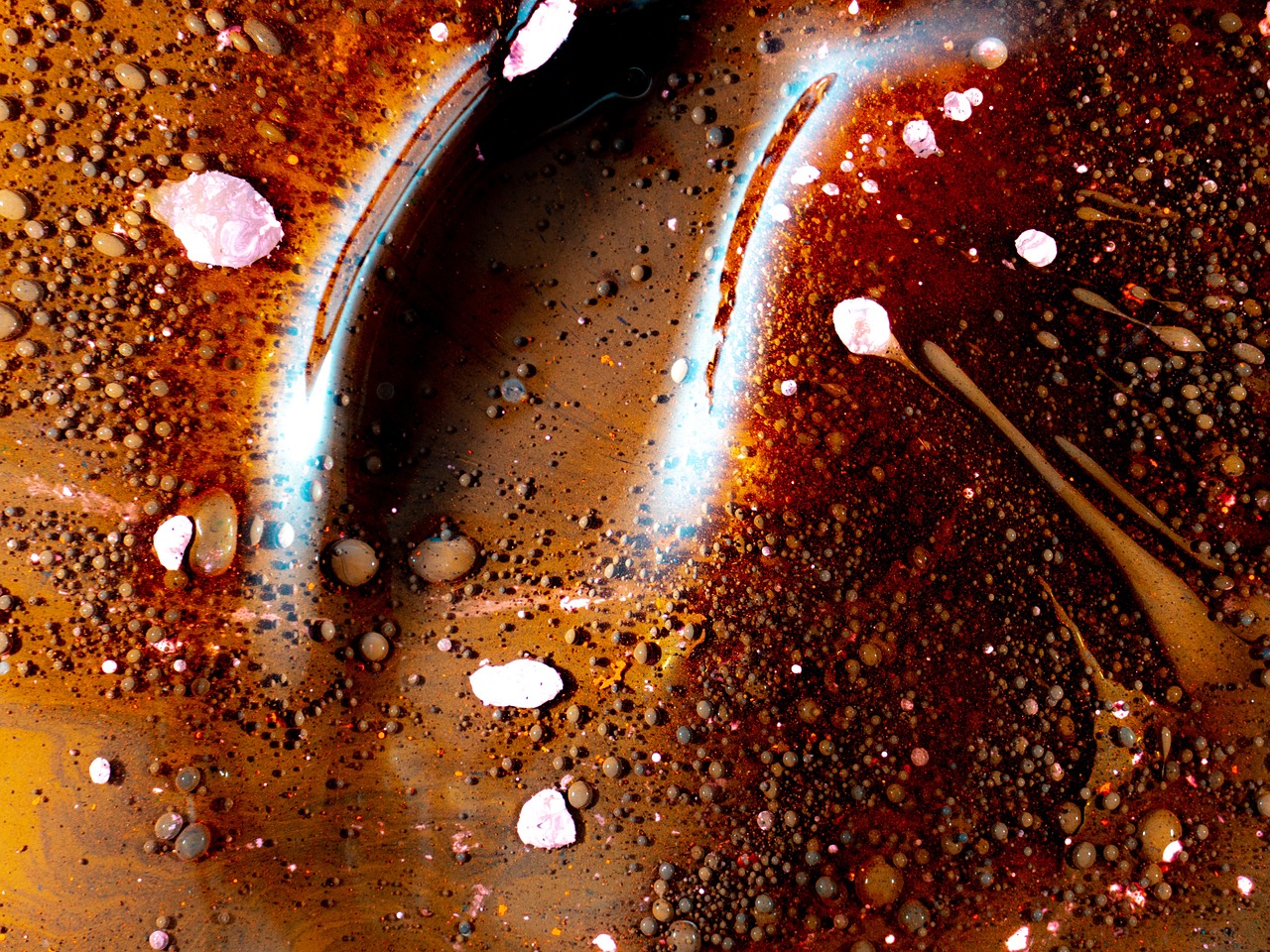
Exploring Oil Paint
Oil paint, with its rich history and vibrant colors, has captivated artists for centuries. This medium is renowned for its depth and versatility, making it a favorite among seasoned painters and a fascinating choice for beginners. One of the most appealing aspects of oil paint is its ability to create stunningly smooth blends and intricate layers, which can elevate your artwork to new heights. However, diving into oil painting can feel like stepping into a vast ocean—exciting yet intimidating. So, what makes oil paint stand out, and how can beginners navigate this artistic journey?
First off, oil paint is composed of pigments suspended in oil, usually linseed oil. This unique formulation gives it a creamy texture and allows for a range of techniques, from glazing to impasto. The richness of oil colors is often described as unparalleled, offering a luminosity that acrylics struggle to match. Imagine painting with a medium that feels like butter on canvas, allowing you to manipulate and mold colors with ease. This quality can be incredibly rewarding, especially when you see your vision come to life in such vivid detail.
However, one of the defining characteristics of oil paint is its slow drying time. While this can be a double-edged sword, it offers a unique advantage: the ability to blend colors seamlessly. This means you can work on a piece over several sessions, allowing you to step back and assess your work before making adjustments. Think of it as a fine wine that gets better with time; the longer you wait, the more refined your painting can become. For beginners, this extended working time can foster a sense of patience and thoughtfulness in your approach to art.
That said, the slow drying time also means that planning your sessions is crucial. You can't just slap on paint and walk away; you need to consider how each layer interacts with the others. This encourages a more deliberate process, which can be both challenging and rewarding. As you experiment with oil paints, you'll find yourself developing a deeper understanding of color theory and composition.
When starting with oil paints, it’s essential to familiarize yourself with the various tools and techniques. Here’s a quick overview of what you might need:
- Brushes: Choose a variety of shapes and sizes, preferably made from stiff bristles to handle the thick consistency of oil paints.
- Mediums: These can alter the paint’s texture and drying time. Linseed oil is a common choice for beginners.
- Palette: A wooden or glass palette is ideal for mixing colors, allowing for easy cleanup.
- Canvas: Stretched canvas or canvas boards are excellent surfaces for oil painting.
In addition to the tools, it's crucial to consider the health and safety aspects of working with oil paints. Unlike acrylics, which are water-soluble, oil paints require solvents for thinning and cleaning. Products like turpentine or mineral spirits can be hazardous, especially in poorly ventilated spaces. Therefore, it’s wise to invest in high-quality, low-odor solvents and always work in a well-ventilated area. This will not only protect your health but also enhance your overall painting experience.
In summary, oil paint offers a unique blend of challenges and rewards, making it a compelling choice for beginners willing to invest time and effort. The journey into oil painting can be immensely fulfilling, providing opportunities for creativity and expression that few other mediums can match. So, if you're ready to embark on this colorful adventure, grab your brushes and let the world of oil paint inspire you!
1. Is oil paint suitable for beginners?
Yes, while it may require more patience and practice, oil paint can be a great medium for beginners willing to learn and explore new techniques.
2. How do I clean my brushes after using oil paint?
Use a solvent like turpentine or mineral spirits to clean your brushes, followed by soap and water to remove any residue.
3. Can I mix oil paint with acrylic paint?
It’s generally not recommended to mix oil and acrylic paints, as they have different properties and drying times. It’s best to stick to one medium at a time.
4. How long does it take for oil paint to dry?
Oil paint can take anywhere from a few days to several weeks to dry, depending on the thickness of the application and the type of oil used.

Drying Time Comparison
When it comes to choosing between acrylic and oil paints, one of the most significant factors to consider is the drying time. This aspect not only influences how you work on your artwork but also affects your overall painting experience. Imagine you're in the zone, brush in hand, and suddenly your paint dries up before you can blend it the way you envisioned. That's a scenario that acrylic users often encounter! Acrylics are known for their rapid drying time, typically drying within 15 to 30 minutes, depending on the thickness of the application and environmental conditions. This quick drying feature allows artists to layer colors swiftly and achieve immediate results, making it an ideal choice for beginners eager to see progress.
On the other hand, oil paints have a much slower drying time, which can range from a few days to several weeks. This slow pace can be a double-edged sword. While it allows for blending and creating intricate details over time, it also requires a certain level of patience. For beginners, this can be both a blessing and a curse. You might find yourself enjoying the ability to work on a piece for days, adjusting and perfecting your work. However, the downside is that you might have to wait a while before you can apply additional layers or varnish your painting.
To illustrate the differences more clearly, here's a simple comparison table:
| Aspect | Acrylic Paints | Oil Paints |
|---|---|---|
| Drying Time | 15 to 30 minutes | Days to weeks |
| Layering | Rapid layering possible | Requires patience for layering |
| Blending | Limited blending time | Extended blending time |
In conclusion, the choice between acrylic and oil paints significantly hinges on your preferred working style. If you thrive on immediacy and enjoy a fast-paced creative process, acrylics might be your best bet. However, if you appreciate taking your time to refine your artwork and enjoy the nuances of blending, oil paints could be the perfect match. Ultimately, understanding how drying time affects your painting approach can help you make a more informed decision as you embark on your artistic journey.
Q: Can I mix acrylic and oil paints?
A: It's generally not recommended to mix acrylic and oil paints directly, as they have different bases and drying times. However, you can use acrylics as an underpainting for oils, as long as the acrylic is completely dry.
Q: How can I speed up the drying time of acrylics?
A: You can speed up the drying time of acrylics by using a hairdryer on a low setting or by painting in a warm, dry environment.
Q: Are there special techniques for using oil paints?
A: Yes, oil paints require specific techniques such as glazing and scumbling, which can take time to master. It’s advisable for beginners to study these techniques to get the most out of oil paints.

Acrylics: Fast and Convenient
Acrylic paints are often hailed as the go-to medium for beginners, and it’s easy to see why. One of the standout features of acrylics is their quick drying time. Imagine starting a painting in the morning and being able to add layers or even complete it by the afternoon! This rapid drying process allows artists to work swiftly, making acrylics an ideal choice for those who thrive on immediate results. Unlike oil paints, which can take days or even weeks to dry, acrylics can be touched and layered almost immediately after application.
For many budding artists, the convenience of acrylics extends beyond just drying time. They are incredibly versatile and can be used on a variety of surfaces, including canvas, wood, paper, and even fabric. This opens up a world of creative possibilities. You can experiment with different textures and techniques without the fear of ruining your work due to prolonged drying times. This flexibility is particularly beneficial for beginners who are still exploring their artistic style and preferences.
Another factor that makes acrylics so appealing is their ease of use. With just a few basic supplies—a palette, brushes, and water—you can dive right into the world of painting. Cleanup is a breeze, too! Since acrylics are water-soluble, you can easily wash your brushes and tools with soap and water, eliminating the need for harsh solvents. This not only saves time but also makes the process less intimidating for newcomers.
Moreover, the vibrant colors of acrylic paints are a joy to work with. They can be thinned with water for a watercolor effect or used straight from the tube for bold, opaque coverage. This adaptability means that whether you want to create a soft pastel landscape or a striking abstract piece, acrylics can accommodate your vision. Plus, as you gain confidence and skill, you can explore various techniques like pouring, glazing, and impasto to further enhance your artwork.
In summary, acrylic paints offer a fast and convenient option for beginners looking to express their creativity. Their quick drying time, versatility, ease of use, and vibrant colors make them an excellent choice for anyone embarking on their artistic journey. So, if you’re ready to unleash your inner artist, grab some acrylics and start painting your masterpiece!
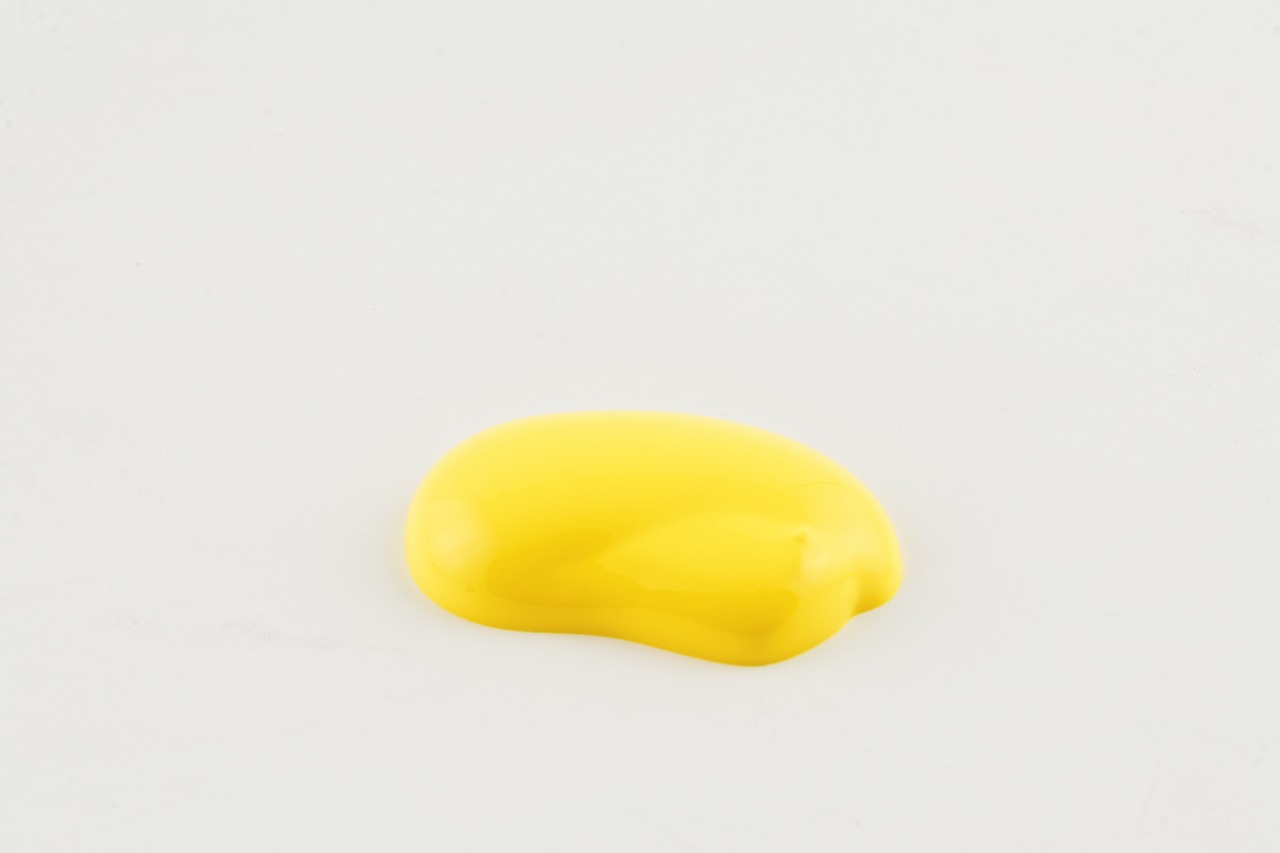
Oils: Patience is Key
When it comes to oil painting, one word often comes to mind: patience. Unlike acrylics, which dry in the blink of an eye, oil paints take their sweet time, allowing artists to delve deep into the nuances of their work. This slow drying process can initially seem daunting, especially for beginners eager to see their creations come to life. However, this very characteristic is what makes oil painting a unique experience that fosters creativity and skill development.
Imagine you’re crafting a beautiful landscape. With oils, you have the luxury of blending colors seamlessly, creating soft transitions that can make your painting feel alive. This ability to manipulate the paint over an extended period means you can layer your colors, refine your details, and adjust your composition without the pressure of racing against the clock. It’s like having a conversation with your canvas, where every stroke can be reconsidered and refined.
Moreover, the slow drying time of oil paints encourages a more thoughtful approach. As a beginner, this can be incredibly beneficial. Instead of hastily applying paint and moving on, you’re prompted to reflect on your choices, leading to a deeper understanding of color theory, composition, and technique. This methodical process can transform your initial attempts into something more profound and expressive.
However, patience doesn’t just apply to the painting itself. It also extends to the learning curve associated with oil paints. Beginners might find themselves frustrated when their initial attempts don’t turn out as expected. But remember, every artist has been there! Embracing the journey, including the mistakes, can lead to significant growth. Just like a fine wine, your skills will improve with time and practice.
In conclusion, while oil paints may require a more patient hand and a willingness to learn, the rewards are immense. The ability to create rich textures and stunning depth is worth the wait. So, if you’re ready to embrace the slow dance of oil painting, grab your brushes and let your creativity flow!
- What is the main difference between acrylic and oil paints? Acrylics dry quickly and are water-soluble, while oils take longer to dry and require solvents for cleanup.
- Can I mix acrylic and oil paints? It's not recommended to mix them directly, as they have different properties, but you can use them in conjunction with proper techniques.
- What is the best medium for beginners? Many beginners prefer acrylics due to their ease of use, but those interested in detailed work might find oils beneficial.
- How do I clean my brushes after using oil paints? You'll need to use solvents like turpentine or mineral spirits to clean your brushes thoroughly.
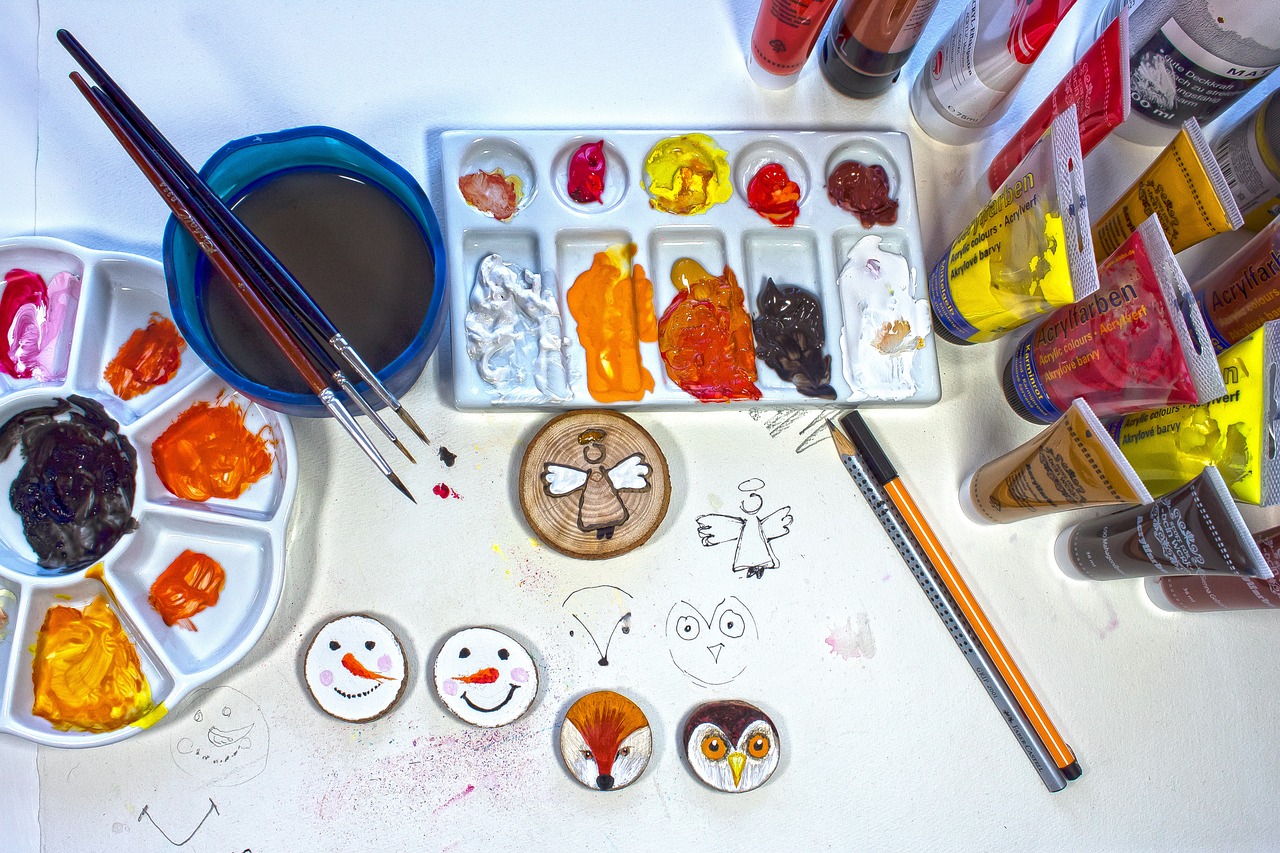
Cost Considerations
When diving into the world of painting, one of the first things that often comes to mind is the cost of materials. For beginners, this can be a crucial factor in deciding between acrylic and oil paints. Both mediums offer a range of options that cater to different budgets, but understanding the long-term investment is essential for making an informed choice. Acrylic paints are typically more affordable upfront, with many student-grade options available that won’t break the bank. You can find starter sets that include a variety of colors for a reasonable price, making it easy to experiment without a hefty financial commitment.
On the other hand, oil paints can be more expensive, especially when you consider the cost of additional supplies like solvents and mediums. While there are budget-friendly oil paint options, the initial investment can be higher compared to acrylics. Additionally, oils often require a more extensive range of materials, such as brushes specifically designed for oil painting and palette knives, which can add to the overall cost. However, many artists argue that the longevity and richness of oil paints justify their higher price point.
To help you visualize the differences in cost, here’s a simple comparison:
| Medium | Initial Cost | Long-term Investment |
|---|---|---|
| Acrylic Paints | Low | Generally lower, easy cleanup |
| Oil Paints | Higher | Potentially higher due to additional supplies |
Ultimately, the choice between acrylic and oil paints will depend on your personal preferences and budget. If you're looking for a medium that allows for quick experimentation without a significant financial burden, acrylics are the way to go. However, if you’re willing to invest more for the sake of depth and richness in your work, oil paints might be worth the splurge. Remember, every artist’s journey is unique, and what works for one may not work for another. So, weigh your options carefully and choose the medium that aligns with your artistic aspirations and financial situation.
- What is the main difference between acrylic and oil paints? Acrylics dry quickly and are water-soluble, while oils take longer to dry and require solvents.
- Are acrylics better for beginners than oils? Yes, acrylics are generally considered more user-friendly for beginners due to their quick drying time and easier cleanup.
- Can I mix acrylic and oil paints? It’s not recommended to mix them directly, as they have different properties, but you can use acrylics as an underpainting for oils.
- How do I clean my brushes after using acrylics and oils? Acrylics can be cleaned with soap and water, while oil brushes require solvents like turpentine or mineral spirits.
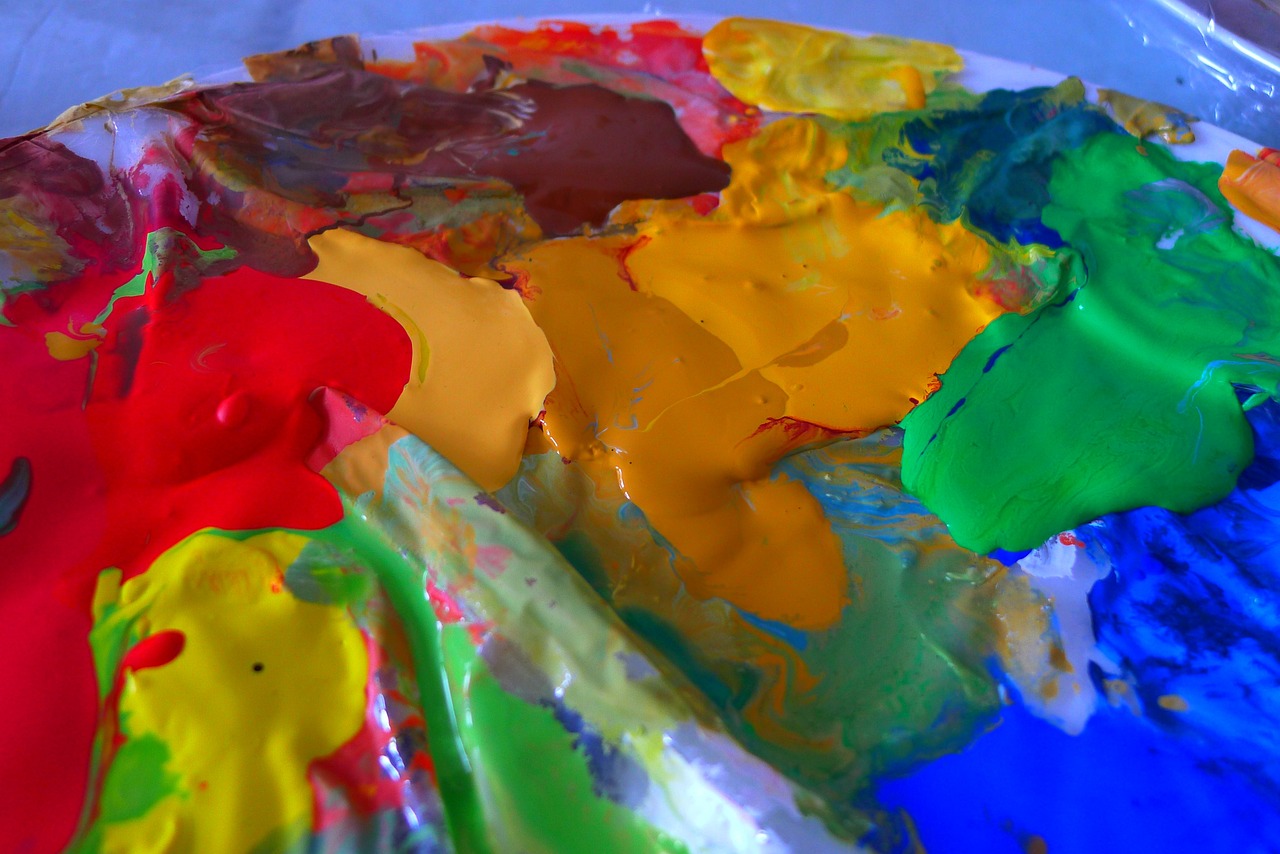
Ease of Use
When it comes to diving into the world of painting, is a crucial factor for beginners. After all, who wants to wrestle with complicated techniques right off the bat? Acrylic paints often steal the spotlight here, being the user-friendly option that many novice artists gravitate towards. Their water-soluble nature means that you can simply clean your brushes with soap and water, making the post-painting cleanup a breeze. Imagine finishing a creative session and not having to scrub your tools with harsh chemicals—sounds great, right?
On the flip side, oil paints can feel like a daunting challenge for newcomers. They require a bit more finesse and knowledge about the materials involved. The need for solvents like turpentine or mineral spirits for cleaning can complicate the process. Not to mention, these substances can have strong odors and require proper ventilation. So, if you're just starting out, the thought of dealing with these materials might make you think twice!
Another aspect to consider is the application technique. Acrylics can be applied straight from the tube, and you can easily mix them with water to achieve different consistencies. This flexibility allows beginners to experiment without the fear of ruining their work. Oil paints, however, demand a bit more technique. They can be mixed with mediums like linseed oil to alter their drying times and textures. While this can lead to stunning results, it may overwhelm those who are just looking to splash some color on canvas.
Furthermore, the drying time of acrylics plays a significant role in their ease of use. Since they dry quickly, you can layer colors without waiting too long. This rapid drying time encourages spontaneity and allows for quick adjustments. In contrast, oil paints take their sweet time to dry, which can be a double-edged sword. While this slow pace allows for detailed blending, it can also lead to frustration for beginners who want to see immediate results.
In summary, if you're looking for a medium that offers simplicity and straightforwardness, acrylics are your best bet. They allow for a more relaxed and enjoyable painting experience without the added stress of complicated cleanup and techniques. However, if you're willing to invest time and patience, oil paints can open up a world of possibilities as you develop your skills. Ultimately, the choice comes down to your personal preferences and what you hope to achieve in your artistic journey.
- Can I mix acrylic and oil paints? No, it's not recommended to mix these two mediums as they have different properties and drying times.
- Which medium is more forgiving for beginners? Acrylics are generally more forgiving due to their quick drying time and ease of cleanup.
- Do I need special brushes for oil paints? Yes, it's advisable to use brushes specifically designed for oil paints to achieve the best results.
- What is the best way to clean up after using acrylics? Simply use soap and water to clean your brushes and tools after painting with acrylics.

Cleaning and Maintenance
When it comes to , the choice between acrylic and oil paints can greatly impact your painting experience. For beginners, understanding how to properly clean your tools and maintain your workspace is essential for a smooth artistic journey. Acrylic paints are known for their water-soluble nature, which means they can be easily cleaned up with just soap and water. This makes them incredibly convenient for those who may not have a lot of time or want to avoid the hassle of dealing with harsh chemicals. Imagine finishing a painting and simply rinsing your brushes under the tap; it’s as easy as that!
On the other hand, oil paints require a different approach. The use of solvents like turpentine or mineral spirits is necessary to clean brushes and palettes after painting. This can be a bit daunting for newcomers, as handling these substances requires caution and awareness of proper ventilation. Not only do you need to worry about the cleanup process, but you also have to consider the potential health risks associated with prolonged exposure to these solvents. It's like stepping into a different world where you need to wear gloves and ensure your workspace is well-ventilated, which can feel overwhelming.
To help you better understand the differences in cleaning and maintenance between acrylics and oils, here’s a quick comparison:
| Aspect | Acrylic Paints | Oil Paints |
|---|---|---|
| Cleanup | Water-soluble; easy cleanup with soap and water | Requires solvents for cleanup; more complicated |
| Health Considerations | Generally safe; minimal precautions needed | Requires care with solvents; good ventilation essential |
| Brush Maintenance | Rinse immediately after use | Clean with solvents; may need conditioning |
In summary, while acrylics offer a hassle-free cleanup process, oils demand more attention and care. For beginners, this distinction can significantly influence your choice of medium. If you prefer a low-maintenance approach that allows you to focus on your creativity without the worry of complicated cleanup, acrylics might be the way to go. However, if you’re willing to invest the time and effort into mastering the cleaning process of oils, you may find the rewards in your artwork to be well worth it.
- Can I use acrylic paint on canvas meant for oil paint?
Acrylics can generally be used on canvases designed for oils, but it's best to check the surface preparation to ensure proper adhesion. - Do I need special brushes for oil painting?
While you can use regular brushes, it's recommended to use brushes specifically designed for oil paints, as they can withstand the harsher cleaning processes. - Is it safe to use acrylics indoors?
Yes, acrylic paints are generally safe to use indoors, but it’s always good to ensure proper ventilation.
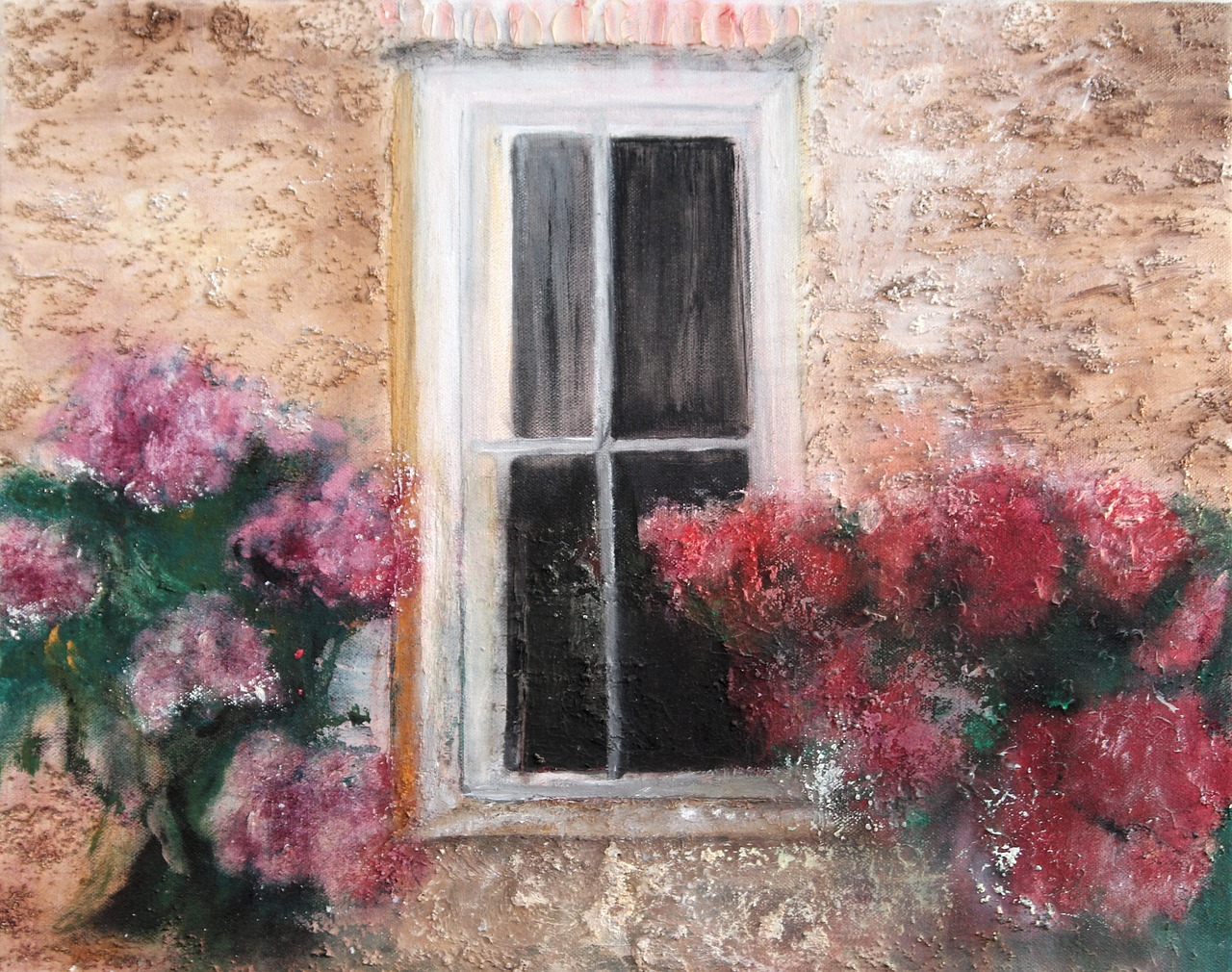
Health and Safety
When diving into the world of painting, should never be an afterthought. For beginners, it's crucial to consider the materials used in your artistic journey, as they can have varying impacts on your well-being. Acrylic paints are generally regarded as a safer option. They are water-based, which means they are less toxic and easier to clean up. You can simply use soap and water to wash your brushes and palettes, minimizing your exposure to harmful chemicals.
On the other hand, oil paints often require the use of solvents for cleaning, such as turpentine or mineral spirits. These substances can emit strong fumes and pose health risks if not handled properly. This is particularly important for beginners who may not be familiar with the necessary precautions. If you choose to work with oils, ensure you are in a well-ventilated area to avoid inhaling any harmful vapors. Additionally, wearing gloves can protect your skin from potential irritants.
Here’s a quick comparison of the health and safety aspects of both mediums:
| Aspect | Acrylic Paints | Oil Paints |
|---|---|---|
| Toxicity | Generally non-toxic | Can be toxic due to solvents |
| Cleanup | Water-soluble, easy cleanup | Requires solvents, more complex |
| Ventilation | No special requirements | Good ventilation is essential |
| Skin Contact | Safe, but some may have allergies | Can cause irritation; gloves recommended |
In summary, while acrylic paints offer a more straightforward and safer approach for beginners, oil paints require a more cautious approach due to the potential health risks associated with their use. It's always wise to read labels, follow safety guidelines, and prioritize your health as you explore your creative side.
- Are acrylic paints safe for children? Yes, acrylic paints are generally non-toxic and safe for children, making them a popular choice for young artists.
- Can I use oil paints indoors? While you can use oil paints indoors, it's essential to ensure proper ventilation to avoid inhaling fumes from solvents.
- What should I do if I accidentally get oil paint on my skin? If you get oil paint on your skin, wash it off with soap and water immediately. If irritation occurs, apply a soothing lotion or consult a physician.
- Do I need special brushes for acrylic or oil paints? Yes, it's advisable to use brushes specifically designed for each medium to achieve the best results and maintain your tools.
Frequently Asked Questions
- What is the main difference between acrylic and oil paints?
The primary difference lies in their drying times and application techniques. Acrylics dry quickly, allowing for faster layering and immediate results, while oil paints take longer to dry, which facilitates blending and detailed work over time.
- Are acrylic paints suitable for beginners?
Absolutely! Acrylic paints are often recommended for beginners due to their ease of use, quick drying time, and versatility across various surfaces. They allow new artists to experiment without the pressure of lengthy drying times.
- Can I use water to clean acrylic paints?
Yes! One of the best features of acrylic paints is that they are water-soluble. This means you can easily clean your brushes and palette with just soap and water, making cleanup a breeze!
- What about oil paints? Are they difficult to use?
While oil paints can be more challenging for beginners due to their slower drying time and the need for solvents, they offer unique benefits like smooth blending and rich colors. With some practice, many find them rewarding to use.
- How can I decide which medium is best for me?
Consider your personal preferences and working style. If you enjoy quick sessions and immediate results, acrylics might be your best bet. However, if you prefer to take your time and develop your techniques, oil paints could be the way to go.
- Are there health risks associated with using oil paints?
Yes, oil paints can pose health risks due to the solvents used for thinning and cleaning. It's important to work in a well-ventilated area and use non-toxic materials whenever possible to ensure your safety.
- What is the cost difference between acrylic and oil paints?
Both acrylics and oils come in a range of prices. Acrylics can be more budget-friendly initially, but high-quality oil paints can also be found at reasonable prices. Consider the long-term investment and your painting goals when making a choice.



















